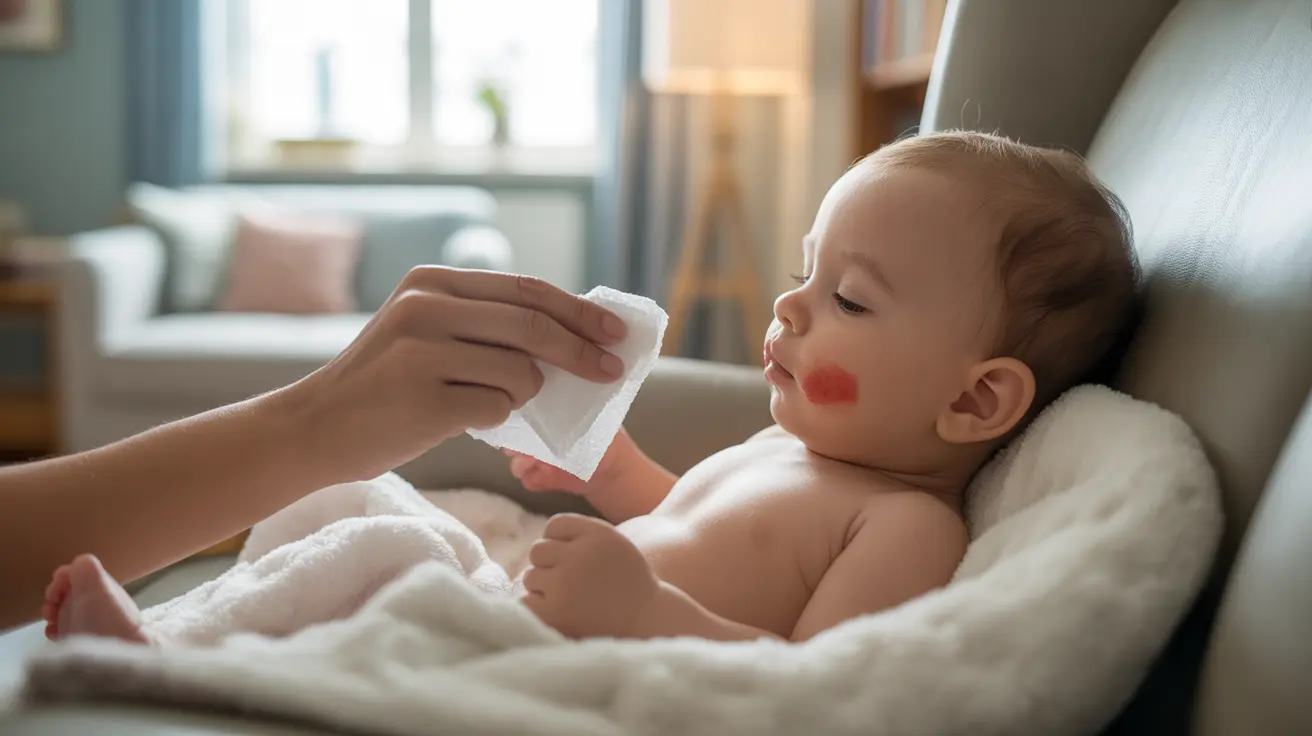Discovering a cold sore on your baby's lip can be concerning for any parent. These small blisters, caused by the herpes simplex virus (HSV-1), require careful attention and proper management to ensure your baby's comfort and prevent spread. Understanding what to look for and how to respond is crucial for every caregiver.
This comprehensive guide will help you identify cold sores, learn about appropriate treatment options, and understand when to seek medical attention for your little one. We'll also cover essential prevention strategies to protect both your baby and others from infection.
Identifying Cold Sores in Babies
Cold sores typically begin as small red spots or bumps on or around the lip area. Within a day or two, these spots usually develop into fluid-filled blisters. The affected area may appear swollen and tender to touch. As the cold sore progresses, the blister can break open, forming a shallow ulcer that eventually crusts over.
Common symptoms that may accompany cold sores in babies include:
- Irritability and fussiness
- Fever (particularly with first-time infections)
- Decreased appetite or difficulty feeding
- Swollen, tender lymph nodes
- General discomfort or pain around the affected area
Home Care and Treatment Options
While cold sores typically heal on their own within 7-14 days, several safe treatment approaches can help manage symptoms and promote healing:
Comfort Measures
Focus on keeping your baby comfortable during the healing process by:
- Applying cool, wet washcloths to soothe the affected area
- Offering cold drinks or frozen treats for older babies
- Ensuring regular feeding despite any discomfort
- Using acetaminophen or ibuprofen (as recommended by your pediatrician) for pain relief
Medical Treatments
Your healthcare provider may recommend:
- Antiviral medications (particularly for severe cases or young infants)
- Prescribed oral pain relief medications
- Topical treatments specifically formulated for babies
When to Seek Medical Care
Certain situations require immediate medical attention. Contact your pediatrician if:
- Your baby is younger than 6 months old
- The cold sore hasn't begun healing within 7-10 days
- Your baby develops a high fever
- Multiple sores appear or spread to other areas
- Your baby shows signs of dehydration
- The affected area becomes severely swollen or red
Preventing Spread and Future Outbreaks
Taking preventive measures is crucial to protect your baby and others:
- Wash hands thoroughly before and after touching the affected area
- Avoid sharing utensils, cups, or personal items
- Keep toys and surfaces clean and sanitized
- Prevent direct contact between the cold sore and others
- Maintain your baby's immune system through proper nutrition and rest
Frequently Asked Questions
What do cold sores on a baby's lip look like and what symptoms should I watch for?
Cold sores typically appear as small red spots that develop into fluid-filled blisters. Watch for swelling, redness, fever, irritability, and difficulty feeding. The sore will usually progress through stages of blistering, ulceration, and crusting over several days.
How can cold sores on a baby's lip be safely treated and managed at home?
Safe home management includes keeping the area clean, applying cool compresses for comfort, ensuring regular feeding, and using pediatrician-approved pain relief medications. Antiviral medications may be prescribed in some cases.
When should I seek medical care if my baby has a cold sore on their lip?
Seek immediate medical attention if your baby is under 6 months old, develops a high fever, shows signs of dehydration, or if the cold sore spreads or doesn't begin healing within 7-10 days.
How can cold sores on a baby's lip be prevented from spreading to others?
Prevent spread through proper hand hygiene, avoiding sharing personal items, keeping surfaces clean, and preventing direct contact between the cold sore and others. Maintain good sanitization practices throughout your home.
Are cold sores on a baby's lip contagious, and how long is my baby contagious?
Yes, cold sores are highly contagious from the time symptoms first appear until the sore has completely healed (typically 7-14 days). The most contagious period is when the blister breaks open before crusting over.




